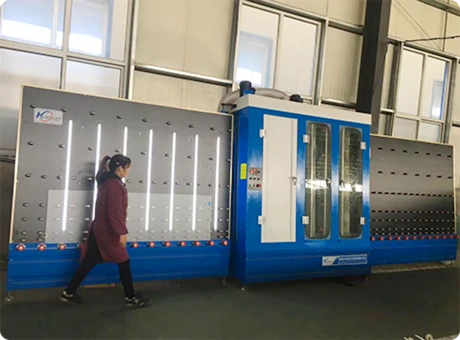Understanding Architectural Tempered Glass Features, Benefits, and Applications
In the realm of modern architecture, the importance of materials cannot be overstated. Among these materials, tempered glass has gained immense popularity due to its unique properties and versatility. This article explores architectural tempered glass, its features, benefits, and various applications within contemporary design.
What is Tempered Glass?
Tempered glass, also known as toughened glass, is produced through a rigorous heating and cooling process. This process involves heating the glass to temperatures of approximately 620 degrees Celsius and then rapidly cooling it. This treatment increases the strength of the glass, making it about five to six times stronger than standard glass. Additionally, it also enhances the glass's ability to withstand thermal stress, making it less prone to breakage under extreme temperature fluctuations.
Features of Architectural Tempered Glass
One of the most remarkable features of tempered glass is its safety profile. In the event of breakage, it shatters into small, blunt pieces rather than sharp shards, significantly reducing the risk of injury. This safety aspect makes it an excellent choice for various architectural applications, including doors, windows, and facades.
Furthermore, the aesthetic appeal of tempered glass cannot be overlooked. Its clarity and ability to transmit light create a seamless connection between indoor and outdoor spaces. This transparency not only enhances the architectural beauty of a building but also contributes to energy efficiency by maximizing natural light.
Benefits of Using Tempered Glass
The use of tempered glass in architecture comes with a myriad of benefits
1. Durability and Strength The enhanced strength of tempered glass allows it to resist impact and withstand external forces, such as severe weather conditions, without compromising structural integrity.
2. Thermal Resistance Architectural tempered glass can handle high temperatures without cracking. This makes it ideal for structures that experience wide temperature variations.
3. Safety As mentioned earlier, the safety characteristics of tempered glass make it particularly appealing for public buildings, residential homes, and high-traffic areas.
architectural tempered glass
4. Energy Efficiency By allowing ample natural light, tempered glass reduces the need for artificial lighting, thereby lowering energy consumption. Additionally, advanced variants, such as low-emissivity (Low-E) glass, further enhance energy efficiency by minimizing heat transfer.
5. Design Flexibility Architects and designers appreciate the versatility of tempered glass, as it can be used in various forms, including clear, tinted, frosted, and reflective finishes. This adaptability allows for creative expressions in modern design.
Applications of Architectural Tempered Glass
The applications of tempered glass in architecture are diverse and far-reaching
1. Building Facades Tempered glass is often used in curtain walls, adding modern aesthetics and allowing for expansive views while providing strength and stability.
2. Windows and Doors Many residential and commercial buildings incorporate tempered glass in their windows and doors for safety and energy efficiency.
3. Shower Enclosures In bathrooms, tempered glass is commonly used in shower enclosures, providing a sleek design while ensuring safety.
4. Balustrades and Railings Tempered glass is an ideal choice for balustrades and railings, as it offers an unobstructed view while ensuring safety in elevated spaces.
5. Skylights The use of tempered glass in skylights allows for optimal natural light while resisting the high thermal stress associated with sun exposure.
6. Glass Partition Walls In office spaces and commercial buildings, tempered glass partition walls promote an open and expansive feel while maintaining separate functional areas.
Conclusion
Architectural tempered glass represents a fusion of safety, durability, and aesthetic appeal, making it a favored choice in contemporary architecture. Its ability to withstand extreme conditions while providing designers with endless possibilities is a testament to its importance in modern construction. As the field of architecture continues to evolve, the role of tempered glass in creating innovative, safe, and aesthetically pleasing environments will undoubtedly expand, paving the way for a future where transparency, strength, and beauty are harmoniously combined.
 Afrikaans
Afrikaans  Albanian
Albanian  Amharic
Amharic  Arabic
Arabic  Armenian
Armenian  Azerbaijani
Azerbaijani  Basque
Basque  Belarusian
Belarusian  Bengali
Bengali  Bosnian
Bosnian  Bulgarian
Bulgarian  Catalan
Catalan  Cebuano
Cebuano  Corsican
Corsican  Croatian
Croatian  Czech
Czech  Danish
Danish  Dutch
Dutch  English
English  Esperanto
Esperanto  Estonian
Estonian  Finnish
Finnish  French
French  Frisian
Frisian  Galician
Galician  Georgian
Georgian  German
German  Greek
Greek  Gujarati
Gujarati  Haitian Creole
Haitian Creole  hausa
hausa  hawaiian
hawaiian  Hebrew
Hebrew  Hindi
Hindi  Miao
Miao  Hungarian
Hungarian  Icelandic
Icelandic  igbo
igbo  Indonesian
Indonesian  irish
irish  Italian
Italian  Japanese
Japanese  Javanese
Javanese  Kannada
Kannada  kazakh
kazakh  Khmer
Khmer  Rwandese
Rwandese  Korean
Korean  Kurdish
Kurdish  Kyrgyz
Kyrgyz  Lao
Lao  Latin
Latin  Latvian
Latvian  Lithuanian
Lithuanian  Luxembourgish
Luxembourgish  Macedonian
Macedonian  Malgashi
Malgashi  Malay
Malay  Malayalam
Malayalam  Maltese
Maltese  Maori
Maori  Marathi
Marathi  Mongolian
Mongolian  Myanmar
Myanmar  Nepali
Nepali  Norwegian
Norwegian  Norwegian
Norwegian  Occitan
Occitan  Pashto
Pashto  Persian
Persian  Polish
Polish  Portuguese
Portuguese  Punjabi
Punjabi  Romanian
Romanian  Russian
Russian  Samoan
Samoan  Scottish Gaelic
Scottish Gaelic  Serbian
Serbian  Sesotho
Sesotho  Shona
Shona  Sindhi
Sindhi  Sinhala
Sinhala  Slovak
Slovak  Slovenian
Slovenian  Somali
Somali  Spanish
Spanish  Sundanese
Sundanese  Swahili
Swahili  Swedish
Swedish  Tagalog
Tagalog  Tajik
Tajik  Tamil
Tamil  Tatar
Tatar  Telugu
Telugu  Thai
Thai  Turkish
Turkish  Turkmen
Turkmen  Ukrainian
Ukrainian  Urdu
Urdu  Uighur
Uighur  Uzbek
Uzbek  Vietnamese
Vietnamese  Welsh
Welsh  Bantu
Bantu  Yiddish
Yiddish  Yoruba
Yoruba  Zulu
Zulu 

